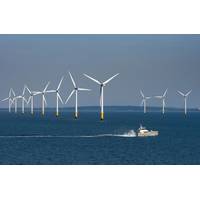Statoil CEO: Oil & Gas Investments Needed Now
"The scale of the climate challenge requires us not only to ask how we can do more, but how we can achieve the most. Climate change doesn’t stop at borders – and neither should our solutions,” says Statoil (STO) CEO Eldar Sætre at the Statoil Autumn Conference.
“We need a global approach that stimulates technology innovation,” Sætre continues.
In the 2014 World Energy Outlook the International Energy Agency (IEA) presents “New Policies” as the main scenario. In this scenario global energy demand rises by 37% in the period to 2040.
By 2040, the world’s energy supply mix divides into four almost-equal parts: oil, gas, coal and low-carbon sources.
No matter which direction environmental policies and measures take, an enormous amount of oil and gas investment will still be needed in the years ahead to secure energy supply, according to the IEA.
A full USD 18.5 trillion will be needed in oil and gas investment from 2014-2035 in order to meet the supply needed for the IEA’s “450 Scenario”, which sets out an energy pathway consistent with the goal of limiting the global increase in temperature to 2°C.
“The challenge is formidable. Even in the IEA’s two-degree scenario, the industry must replace four times Saudi Arabia’s production of oil and 10 times Norway’s production of gas just to fight natural decline,” says Sætre.
EU climate targets
The European Union recently announced their target of cutting carbon emissions by 40% by 2030, which is also line with Statoil’s recommendations.
“While the agreement is an important step in the right direction, now the job is to make sure that promises turn into policies, and ambitions into actions. If the EU’s ambitions are backed by efficient measures, it will underpin the role of gas in the European markets, replacing coal and reducing emissions,” Sætre says.
Statoil is a strong advocate for a global approach towards a much higher carbon price—and has seen the results in action.
Based on Norway having one of the world’s highest prices on carbon emissions, Statoil has the world’s most carbon-efficient oil and gas production.
Statoil’s commitment and contribution to tackling climate change goes beyond advocacy for a high carbon price and the promotion of gas.
“We are working to make our production more energy efficient. We are contributing as an industry and as a company to cuts in emissions as part of the Norwegian “Klimaforliket”. And we’re working to achieve more,” says Sætre.
Statoil remains focused on developing carbon capture and storage, and carbon capture and use, as part of the longer-term solution.
Statoil and the entire oil industry have since the early 1990s had a commitment on the Norwegian continental shelf not to flare from routine operations.
“Globally we are now also working collaboratively against flaring through the Global Gas Flaring Reduction Partnership,” says Sætre. This is a World Bank initiative aiming to eliminate global flaring by 2030.
And at the UN Climate Summit in New York in September, Statoil and partners launched the Climate and Clean Air Coalition Oil and Gas partnership.
This partnership aims to find effective solutions to detect and reduce methane emissions— which account for a significant, but underexposed share of greenhouse gas emissions.
Energy needs in Africa
One of the main focus areas of this year’s Autumn Conference and World Energy Outlook report is economic development, sustainability and energy needs in Africa—focusing particularly on the sub-Saharan regions.
While almost 30% of global oil and gas discoveries have taken place in sub-Saharan Africa over the last five years, more than two-thirds of the population still lacks access to electricity.
“Statoil has over the past few years made significant gas discoveries offshore Tanzania and we are excited about the opportunities we see for a natural gas and LNG development. We already experience that expectations to Statoil’s contributions are significant. Given that only around 15% of the population have access to the electrical grid, that is not difficult to understand,” says Sætre.
The IEA report highlights three actions that—if accompanied by more general governance reforms— can boost the sub-Saharan economy by a further 30% in 2040: an upgraded power sector, deeper regional cooperation, and better management of energy resources and revenues through efficiency and transparency in financing.
“Our strong presence comes with a big responsibility. This is about developing a sound, sustainable and profitable business that gives the government revenues necessary for economic growth and development. It is about contributing to local capacity building, and about contributing to openness and transparency,” says Sætre.










